(cliquez ici pour une version traduite automatiquement en français )
A year ago I bought an LTDZ analyzer, without finding the needed time to test it. It’s done now.
It is an analyzer that can be found for less than 40 € (with a casing) or around 30 € without a casing. The schematic is identical to the original D6, so with the same design errors, and the only differences concern the firmware and the size of the device. The LTDZ analyzer is the smallest one.

Like the D6 this analyzer suffers from a significant overload when used it in SNA mode, the TG output delivers a signal too strong for the mixer located on the input port
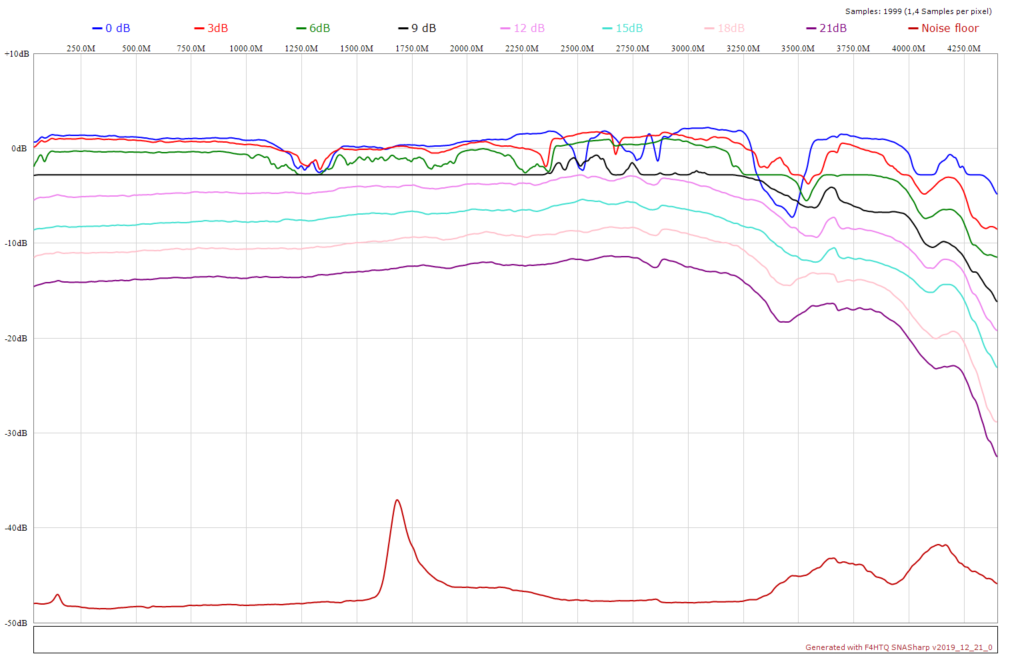
For this reason, if you hope to made relevant measures in tracking mode, you will add (at least) 12dB of attenuators (6dB on each port), as example with these small SMA attenuators.
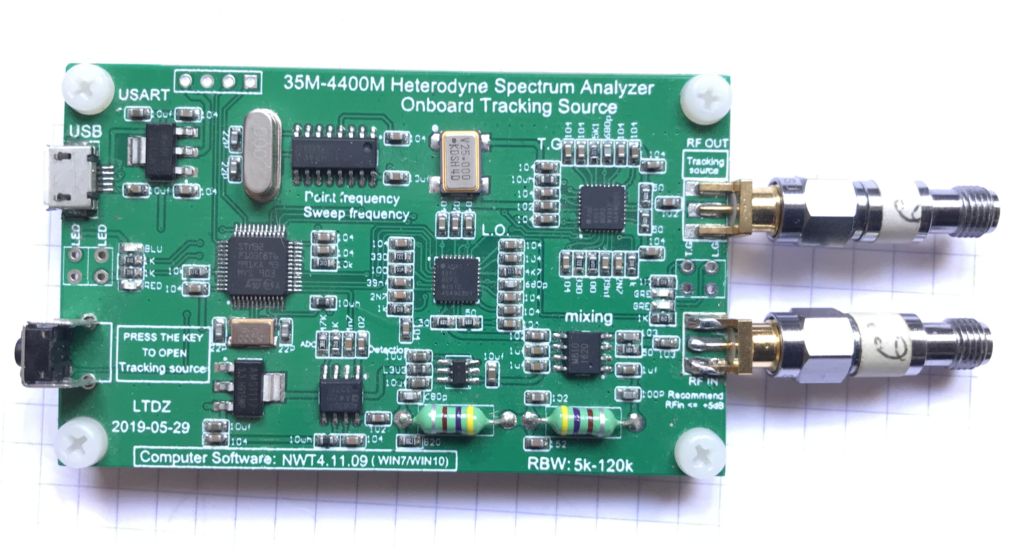
As the D6 the input impedance is not matched, the analyzer presents about 30 Ohms instead of the expected 50 Ohms, the author having added an unnecessary 50 Ohms resistor on the input while the mixer is already matched to 50 Ohms.
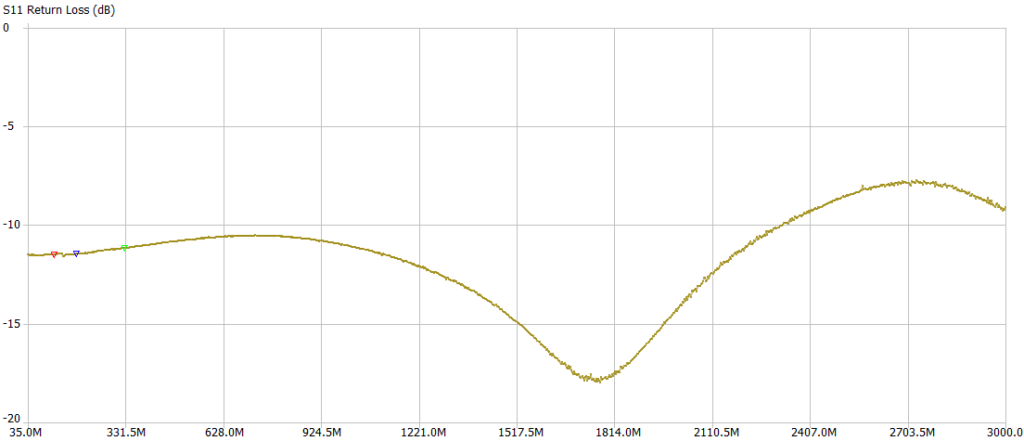
But, as expected, the matching is improved when we add 6dB attenuator.

You can also improve the input matching by removing the 50 Ohm resistor..

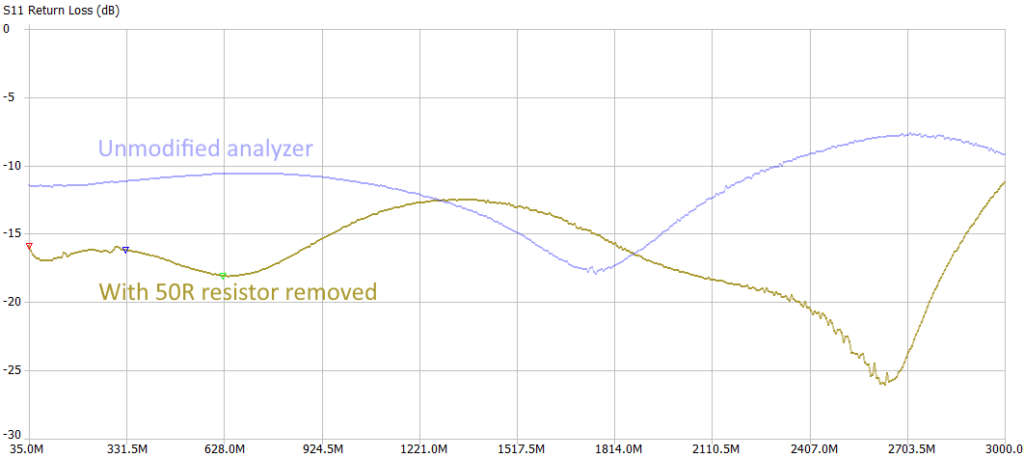
If you have removed the 50R resistor, the entry become more sensitive and you must add 3dB more attenuation (15dB total) in tracking mode, otherwise the analyzer could saturate.
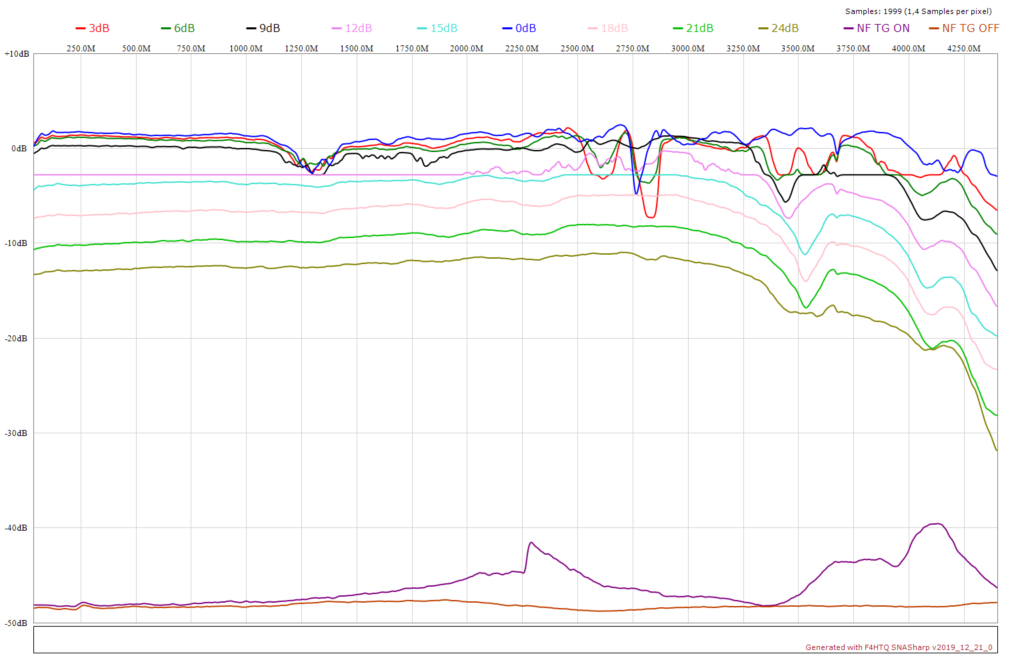
At this point, the issues encountered were anticiped (because they were also present on the D6) , but the reality is worse.
I realized that the analyzer was returning wrongs values, it was exaggerating the level variations by 60% (16dB of variation for 10dB efective).
I think it’s an error in the firmware, maybe the author wanted to compensate for the lack of dynamic range of the device, by returning « amplified » results, sadly this made the measurements wrong .
To compensate this issue, i need to change vertical sensibility in SNASharp device description.
(This new setup will be available of the next SNASharp release, but LTDZ owner can edit this value on current version).
With the right sensibility, the dynamic range of this analyzer down to less as 50dB.

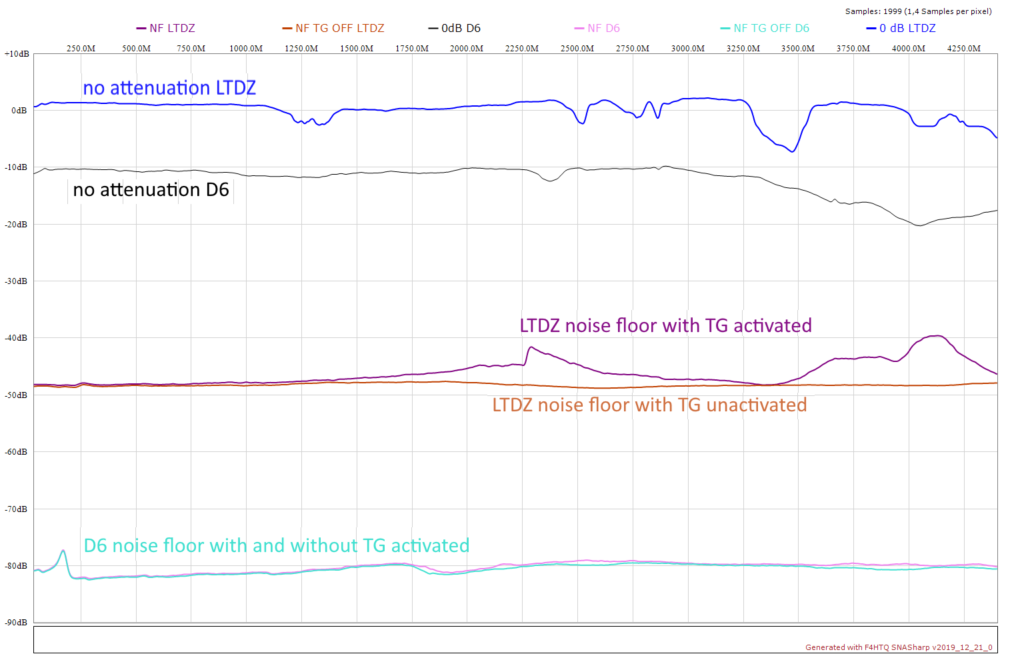
For this reason it is better to buy a D6 than an LTDZ, especially since the manufacturer of the D6 has taken into account certain comments from this blog to improve it.
Some improvements can be made on this analyzer, the same as the D6 (untested on LTDZ)
– Add attenuator on ports : http://alloza.eu/david/WordPress3/?p=652
– FI filter upgrade : http://alloza.eu/david/WordPress3/?p=542
– Update the firmware : https://github.com/joseluu/D6_firmware
– Improve the filtering of tension booster as Peter (DL4RDR) : http://alloza.eu/david/WordPress3/?p=1014#comment-35529
David, F4HTQ.

Cela aurait été beaucoup mieux en Français, au moins un choix Français/Anglais
Cela dit, même si je n’ai pas tout compris, merci pour le travail.
73′
F1BZG Philippe
Bonjour Philippe,
Merci pour votre message.
Quand j’ai écris cet article, j’ai fait attention d’écrire un anglais que google translate était capable de très bien traduire en Français, j’ai modifié plusieurs fois les tournures pour que ce soit le cas.
Donc si vous cliquez ici : https://translate.google.com/translate?sl=en&tl=fr&u=http://alloza.eu/david/WordPress3/?p%3D1085
vous aurez une version traduite en français de qualité.
David.
Bonjour David,
Félicitations pour vos remarques sur ce nouvel analyseur de spectre à bas coût. Encore mieux, c’est en anglais ! Le nombre de lecteurs n’en sera que plus grand, le nombre de remarques constructives faites ici ou par mail par des amateurs compétents n’en sera probablement que plus grand aussi.
PS
A l’intention de Philippe F1BZG :
Vous pouvez aussi utiliser un traducteur (en ligne ou sur votre PC) qui s’appelle DeepL et qui donne fréquemment d’excellents résultats. C’est ici :
https://www.deepl.com/translator
Bien cordialement,
Francis, F6AWN
Merci d’être passé et aussi pour ce commentaire Francis.
Cordialement,
David, F4HTQ.
Bonjour David
Merci pour tes recherches et travail!
J’aimerais utiliser le D6 « standalone » et pour ça il faudrait un « PC » assez petit de façon qu’il passe dans un boitier d’instrumentation. Je pense surtout a un Raspberry.
Voit-tu une possibilité de compiler SNASharp sur ARM64?
73
Daniele, HB9OBB
Bonjour Daniele,
SNASharp n’est pas une application native, elle marche sous machine virtuelle .NET. Cela impose d’avoir un framework compatible .NET pour la faire fonctionner , mais en contrepartie cela peut fonctionner sur toutes les architectures qui supportent .NET (qu’elle soit ARM ou Intel ou 32 ou 64 bits n’a pas d’importance). Sous Linux et sur MAC je fais fonctionner SNASharp avec Mono. Je sais qu’il existe une version de Mono sur Raspberry mais je ne l’ai jamais testée, et encore moins avec SNASharp. ça me semble être la meilleure possibilité de s’en sortir.
Cordialement,
David, F4HTQ.
bonjour David,
en fin des nouvelle de toi !
as tu vu l’analiseur
LTDZ-35M-4400M-Handheld-Simple-Spectrum-Analyzer ?
on pourra faire mieux comme soft ?
amicalement,
Theo F4VRJ
Bonjour Théo,
Il s’agit de l’analyseur avec un écran LCD intégré ?
En te souhaitant une bonne soirée.
David.
PS: je t’ai abonné au alertes sur ce sujet pour que tu vois cette réponse , si ça pose problème je peux te désabonner.
Ping : SNASharp v2021_07_03_0 - Dans mon atelier - David F4HTQDans mon atelier – David F4HTQ
Bonjour,
Pouvez vous m’expliquer les caractéristiques techniques d’une carte D6 avec un ATmegaA8
Mon besoin est d’avoir la possibilité de faire un analyseur de spectre pour ondes courtes. Donc minimum 0.30/40 mhz
Sur la carte c’est toujours sérigraphié 33 440mhz (Question de fabrication?)
idem pour les caractéristiques données (Copié collé d’une carte « normale » 33 4400
Donc je me pose ces questions
merci pour votre réponse
cdt